#Claire duvivier
Text
les couvertures qui se rejoignent !!


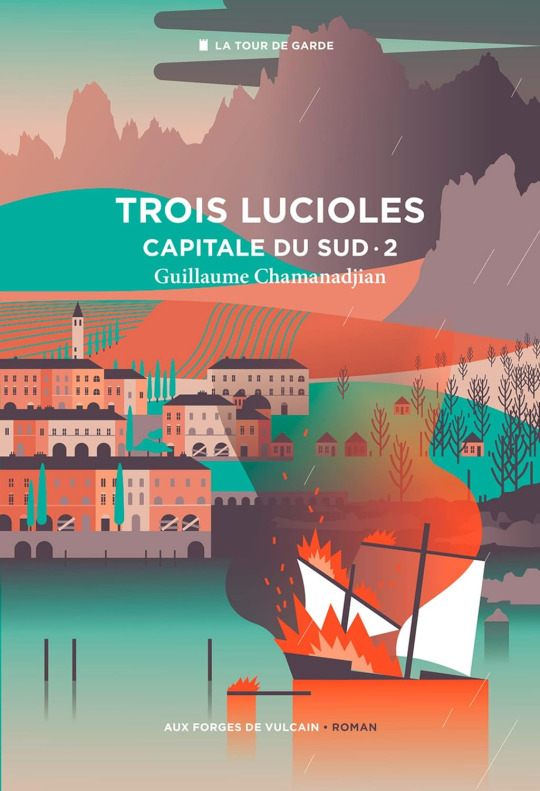
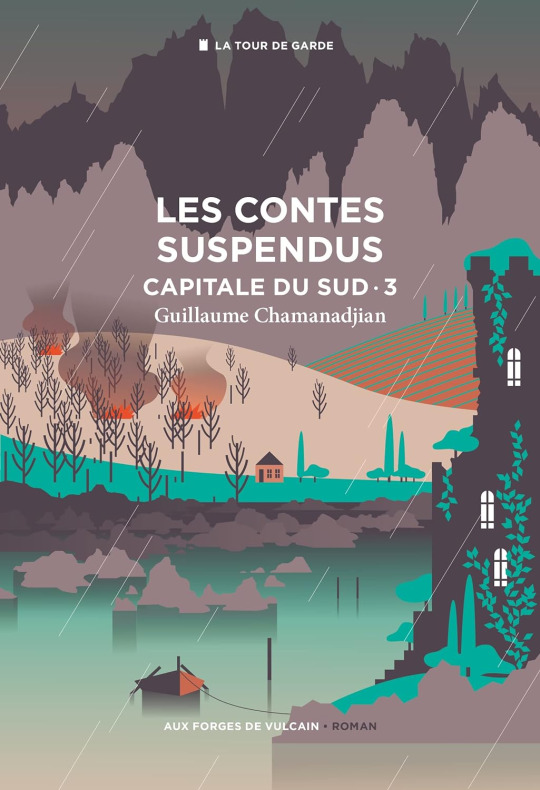
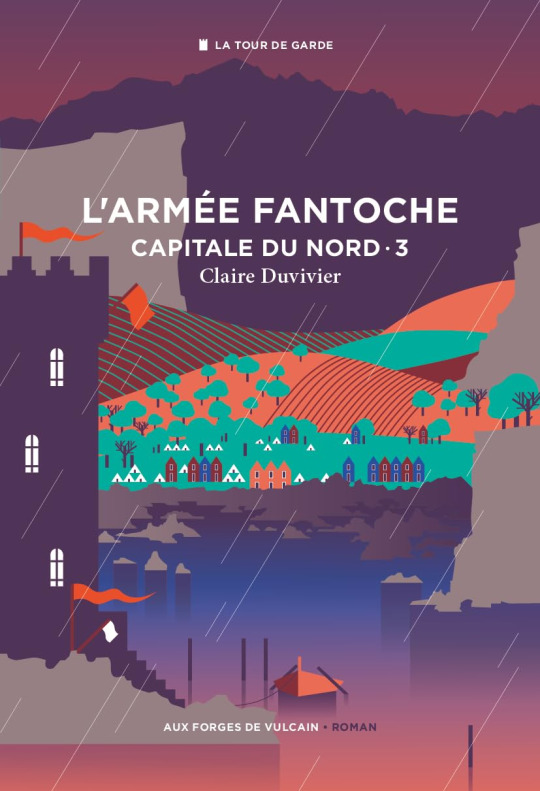
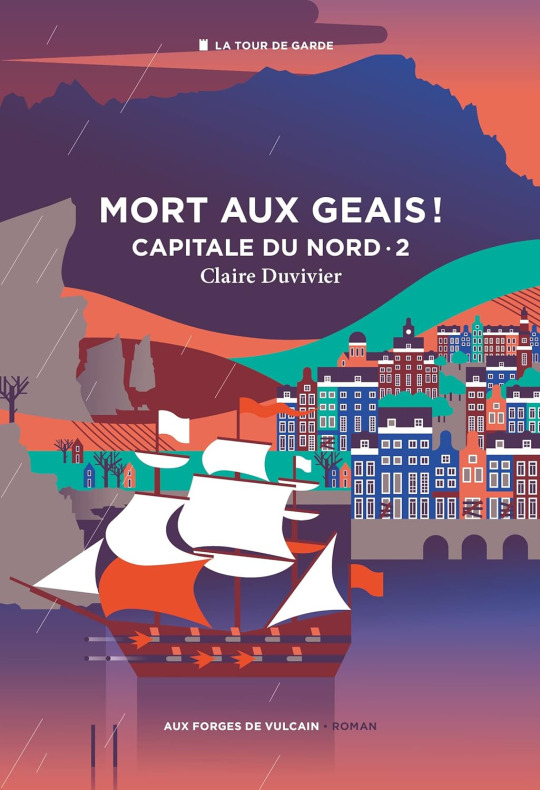
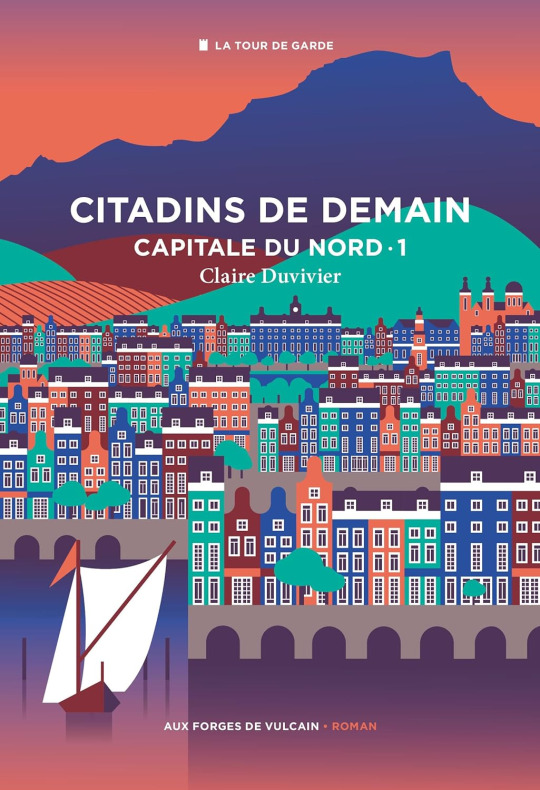
0 notes
Text
« Mort aux Geais ! », de Claire Duvivier
Aujourd'hui sur Blog à part – « Mort aux Geais ! », de Claire Duvivier
En fuite et coupés de tous soutiens, Amalia et Yonas se cachent dans les faubourgs, alors que sur les murs, fleurissent des slogans comme Mort aux Geais!
#roman #fantastique
En fuite après les tragiques événements du tome précédent, coupés de tous soutiens, Amalia et Yonas se cachent dans les faubourgs de Dehaven. Alors que sur les murs, fleurissent des slogans comme Mort aux Geais!, qui donne son titre à ce roman de Claire Duvivier.
Mort aux Geais! est donc le deuxième tome de la trilogie Capitale du Nord, faisant partie du diptyque La Tour de Garde avec son…
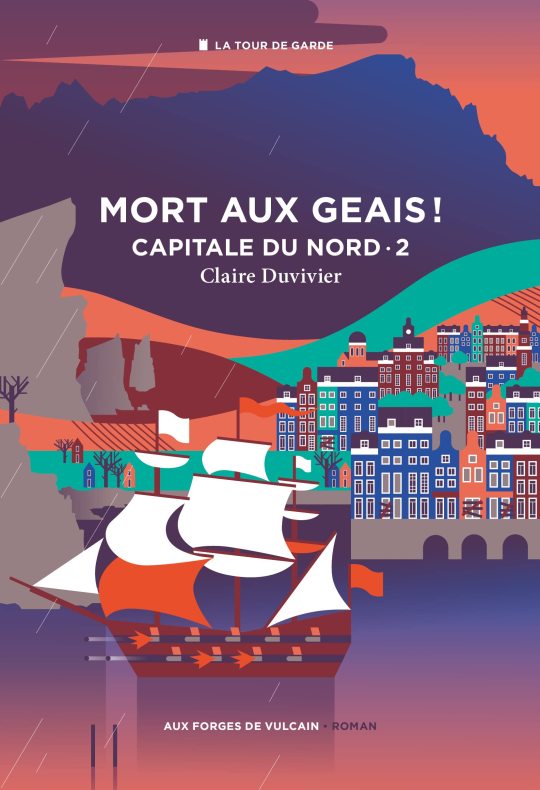
View On WordPress
0 notes
Text
The Antoine Doinel Cycle

Jean-Pierre Léaud in The 400 Blows (François Truffaut, 1959)
Cast: Jean-Pierre Léaud, Albert Rémy, Claire Maurier, Patrick Auffay, Georges Flamant. Screenplay: François Truffaut, Marcel Moussy. Cinematography: Henri Decaë. Film editing: Marie-Josèphe Yoyotte. Music: Jean Constantin.
One of the unquestioned great movies, and one of the greatest feature-film directing debuts, The 400 Blows would still resonate with film-lovers even if François Truffaut hadn't gone on to create four sequels tracking the life and loves of his protagonist, Antoine Doinel (Jean-Pierre Léaud). There are, in fact, those who think that the last we should have seen of Antoine was the haunting freeze-frame at the end of the film. But Antoine continued to grow up on screen, and perhaps more remarkably, so did Léaud, carving out his own career after his debut as a 13-year-old. (It's hard to think of any American child actors who were able to maintain a film career into adulthood as well as Léaud did. Mickey Rooney? Dean Stockwell? Who else?) Having Truffaut as a mentor certainly helped, but Léaud had an unmistakable gift. He is on screen for virtually all of the 99-minute run time, and provides a gallery of memorable moments: Antoine in the amusement-park centrifuge, Antoine in the police lockup, Antoine on the run -- in cinematographer Henri Decaë's brilliant long tracking shot. And my personal favorite moment: when the psychologist asks Antoine if he's ever had sex. Léaud responds with a beautiful mixture of surprise, amusement, and embarrassment. It's so genuine a response that I have to think it was improvised, that Truffaut surprised Léaud with the question. But even so, Léaud never drops character in his response. This praise of Léaud is not to undervalue the magnificent supporting cast, or the haunting score by Jean Constantin. It's a film in which everything works.

Jean-Pierre Léaud and Marie-France Pisier in Antoine and Colette (François Truffaut, 1962)
Cast: Jean-Pierre Léaud, Marie-France Pisier, Rosy Varte, François Darbon, Patrick Auffay, Jean-François Adam. Screenplay: François Truffaut. Cinematography: Raul Coutard. Music: Georges Delerue.
Four years after he made The 400 Blows, Truffaut was asked to contribute to an anthology of short films by directors from various countries to be called Love at Twenty. As he had with the first film, Truffaut drew on his own experience, an infatuation with a girl he had met at the Cinémathèque Française. And since Léaud was available -- he had worked with Julien Duvivier on Boulevard (1960) after completing The 400 Blows -- it made sense for him to play Antoine Doinel again. A narrator tells us that Antoine had been sent to another reform school after escaping from the first, and that this time he had responded well to a psychologist: After leaving school, he has found a job working for the Phillips record company and is living on his own. Then he sees a pretty young woman at a concert of music by Berlioz and falls for her. Colette (Marie-France Pisier) is not much interested in him, but she is evidently flattered by his advances. Her parents like Antoine and encourage him so much that he rents a room across the street from them. (Truffaut had done the same thing during his crush.) But one evening when he comes to dinner at their apartment, a man named Albert (Jean-François Adam) calls on Colette and she leaves Antoine watching TV with her parents. It's a droll little film, scarcely more than an anecdote, and the stable, lovestruck Antoine doesn't seem much like either the rebellious Antoine of the first film or the more scattered Antoine of the later ones in the cycle.
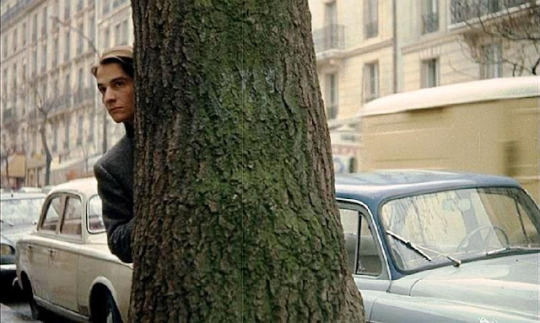
Jean-Pierre Léaud in Stolen Kisses (François Truffaut, 1968)
Cast: Jean-Pierre Léaud, Claude Jade, Michael Lonsdale, Delphine Seyrig, Michael Lonsdale, Claire Duhamel, Daniel Ceccaldi. Screenplay: François Truffaut, Claude de Givray, Bernard Revon. Cinematography: Denys Clerval. Production design: Claude Pignot. Film editing: Agnès Guillemot. Music: Antoine Duhamel.
The Antoine of Stolen Kisses is in his 20s, but has reverted to the more haphazard ways of his adolescence: He has been kicked out of the army, and now relies on a series of odd jobs to get by. But he has also renewed acquaintance with a young woman he met before going into the army, Christine Darbon (Claude Jade). Like Colette's parents, hers are quite taken with Antoine, and they help him get a job as a night clerk in a hotel. He gets fired from that job after helping a private detective who is spying on an adulterous couple, but the detective helps Antoine get a job with his agency. While working for the detective agency, he has to pose as a clerk in a shoe store, and winds up in a liaison with the store owner's wife, Fabienne (Delphine Seyrig). When that ends badly, he becomes a TV repairman, which brings him back to Christine, with whom he winds up in bed after trying to fix her TV. At the film's end, a strange man who has been following Christine comes up to her and Antoine in the park and declares his love for her. She says he must be crazy, and Antoine, who perhaps recognizes his earlier infatuation with Colette in the man's obsession, murmurs, "He must be." Stolen Kisses is the loosest, funniest entry in the cycle, though it was made at a time when Truffaut was politically preoccupied: The film opens with a shot of the shuttered gates of the Cinémathèque Française, which was shut down in a conflict between its director, Henri Langlois, and culture minister André Malraux. This caused an uproar involving many of the directors of the French New Wave. Some of Antoine's anarchic approach to life may have been inspired by the rebelliousness toward the establishment prevalent in the film community. But it's clear that the idea of a cycle of Antoine Doinel films has been brewing in Truffaut's mind: There is a cameo appearance by Marie-France Pisier as Colette and Jean-François Adam as Albert, now married and the parents of an infant.

Claude Jade and Jean-Pierre Léaud in Bed and Board (François Truffaut, 1970)
Cast: Jean-Pierre Léaud, Claude Jade, Claire Duhamel, Daniel Ceccaldi, Hiroko Berghauer. : François Truffaut, Claude de Givray, Bernard Revon. Cinematography: Néstor Almendros. Production design: Jean Mandaroux. Film editing: Agnès Guillemot. Music: Antoine Duhamel.
Antoine and Christine have married, and they have settled down in a small apartment. (There's some indication that it's paid for by her parents.) She gives violin lessons and he sells flowers -- carnations, which he dyes, using some environmentally questionable potions. But settling down isn't in Antoine's nature, and when Christine gets pregnant he looks for more lucrative work. He finds a curious sinecure in a company run by an American: Antoine maneuvers model ships by remote control through a mockup of a harbor. ("It gives me time to think," he says.) One day, a Japanese businessman comes to see the demonstration, accompanied by a pretty translator named Kyoko (Hiroko Berghauer), and Antoine is soon involved in an affair with her. Naturally, this precipitates a breakup, though by film's end they have seemingly reconciled. Still, it's obvious that the marriage is not destined to be permanent. They can't even agree on a name for their son: She wants him to be called Ghislain, and he wants to call him Alphonse. Antoine wins out by a trick: He's the one who goes to the registry office to legalize the boy's name. Antoine also spends time writing a novel about his boyhood, to which Christine objects: "I don't like this business of writing about your childhood, dragging your parents through the mud. I don't know much but I do know one thing: If you use art to settle accounts, it's no longer art." Truffaut had his own regrets about the portrait of his parents in The 400 Blows. Less farcical than Stolen Kisses, Bed and Board still has a strong vein of comedy tinged with melancholy.
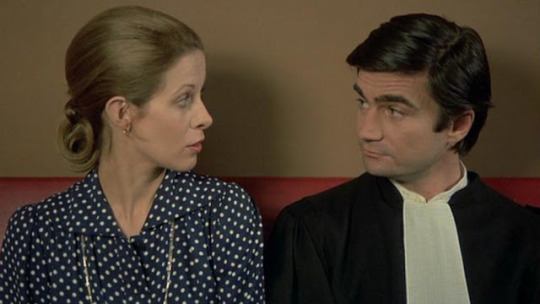
Claude Jade and Jean-Pierre Léaud in Love on the Run (François Truffaut, 1979)
Cast: Jean-Pierre Léaud, Marie-France Pisier, Claude Jade, Dani, Dorothée, Daniel Mesguich, Julien Bertheau. Screenplay: François Truffaut, Marie-France Pisier, Jean Aurel, Suzanne Schiffman. Cinematography: Néstor Almendros. Production design: Jean-Pierre Kohut-Svelko. Film editing: Martine Barraqué. Music: Georges Delerue.
Truffaut admitted that he wasn't happy with the final film in the cycle. It's a bit too heavily reliant on flashback clips from the four earlier films, and if it's intended to show that Antoine has finally stabilized now that he's in his 30s and divorced from Christine, it doesn't quite make the case. He has a new girlfriend, Sabine (Dorothée), his novel has been published several years earlier, and he works as a proofreader for a printing house. He's on friendly terms with Christine, and agrees to take their son, Alphonse, to the train station when the boy leaves for a summer music camp. At the station, he runs into Colette, now a defense lawyer, who is on her way to confer with a client -- a man who has murdered his 3-year-old boy. Perhaps a little too coincidentally, Colette is involved with Sabine's brother, Xavier (Daniel Mesguich), and she has bought a copy of Antoine's novel to read on the train. Antoine impulsively boards the train, and sets up a meeting with Colette in the dining car, after which she invites him back to her compartment. All of this sets up a series of revelations: Colette's marriage to Albert broke up after their small daughter was killed by a car. She claims that she supplements her small income as a lawyer by prostituting herself with men she meets on trains. Antoine finally made peace with his mother after her death when he met her old lover, M. Lucien (Julien Bertheau), who persuaded him to visit his mother's grave. (There is a flashback to the scene in The 400 Blows when Antoine, playing hooky, sees his mother kissing a strange man on the street.) Antoine became infatuated with Sabine after hearing a man in a phone booth arguing with a woman on the other end of the line and then tearing up her photograph. Antoine picked up the pieces from the floor, put them together, and after some sleuthing, discovered the woman was Sabine. His marriage to Christine finally broke up after he slept with her friend Liliane (Dani), who he previously had thought was having a lesbian relationship with Christine. And so on. The result of all the flashbacks and revelations is not to round out the Antoine Doinel saga, but to make Love on the Run feel over-contrived.
#The 400 Blows#Jean-Pierre Léaud#Marie-France Pisier#François Truffaut#Antoine and Colette#Stolen Kisses#Bed and Board#Claude Jade#Love on the Run
15 notes
·
View notes
Text
The Occupation and Public Opinion
The films that I chose to view this week for France and the war are Rules of the Game (Renoir, 1939), for poetic realism, and La Belle et le Bête (Cocteau, 1946), for Cinema and the Occupation. From some reading I did by authors Georges Sadoul and Lincoln Kierstein, I learned that the occupation of France by Germany did a great number on their creative filmmaking. They were incredibly restricted in terms of what they were able to produce. As Sadoul puts it, “The second World War brutally interrupted the renaissance Renoir, Rene Clair, and Duvivier were able to reach Hollywood. Feyder had to take refuge in Switzerland. The Propaganda Staffel, organ of Nazi censorship, kept French cinema under rigid control” (Sadoul, 3-4). Renoir directed Rules of the Game which was released before he fled the occupation. It’ll be interesting to see how he made films before his time in Hollywood and how his influence and talent were missed in France. He is a prime example of a creative that is looked up to in the battle against opposing forces.
For La Belle et le Bête (Cocteau, 1946), this film was released after the occupation. It’s a very creative film, using the classic tale Beauty and the Beast. This seems to be France’s way of bouncing back following the war and shows their resilience. As Kirstein puts it, “The French are deeply interested in the future of their own films. Since our invasion, virtually not a camera has turned, but today every paper is full of new ideas and plans for projects and collaborations, many of which give every evidence of being impressive and successful” (Kirstein, 4). This adaptation is a key example of collaborating with creative sources. It was their way of bouncing back and breaking the barriers put there by the German occupation. This film will inform a lot of questions about the resurgence in French filmmaking following the occupation.

0 notes
Text
Interview de Claire Duvivier et Guillaume Chamanadjian (octobre 2022)
Interview de Claire Duvivier et Guillaume Chamanadjian (octobre 2022)
Suite à leur venue au Mans lors du salon du livre début octobre 2022 (ils sont les lauréats 2021 et 2022 du prix Imaginaire Christine-Rabin de La 25e Heure du Livre), Claire Duvivier et Guillaume Chamanadjian ont accepté de répondre à quelques questions sur leur écriture en cours, notamment la double trilogie de la Tour de Garde.
(more…)

View On WordPress
0 notes
Text
Claire Duvivier et la concordance des temps:
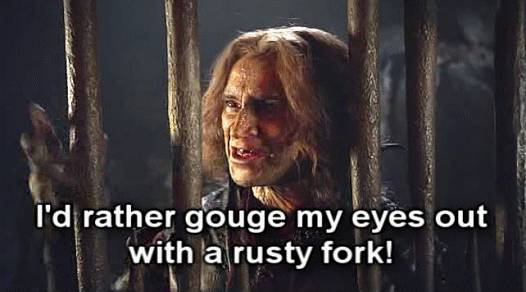
#S'il vous plaît Madame on peut pas mettre du passé simple partout#Même pour make a point sur les différentes classes sociales d'un univers#J'ai mal à mon Bescherelle#currently reading#La Tour de garde#Capitale du Nord#Citadins de demain#french side of tumblr
0 notes
Text
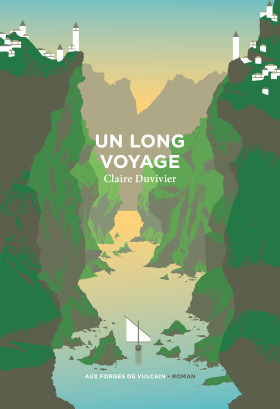
Un long voyage, Claire Duvivier, Aux forges de Vulcain (2020)
1 note
·
View note
Text
Un long Voyage
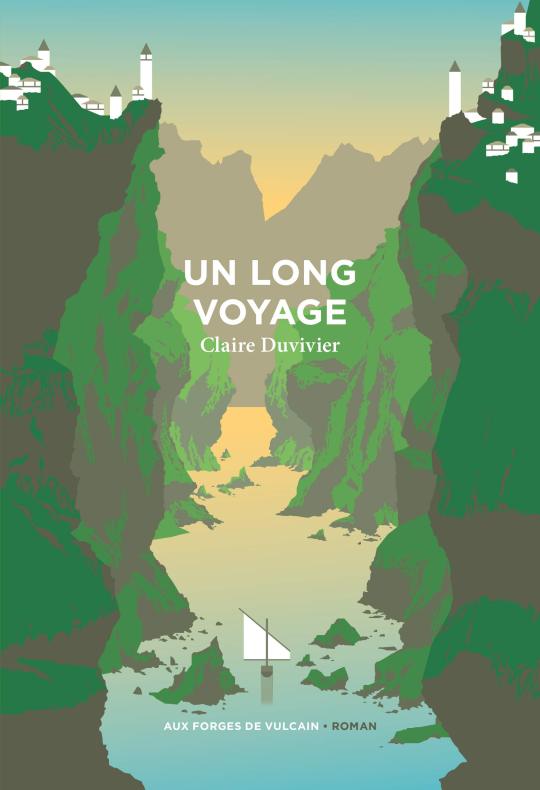
Titre : Un long Voyage
Autrice : Claire Duvivier
Roman
Genre : Fantasy
Maison d’édition : Aux forges de Vulcain
Disponible en version papier - Nombre de pages : 314 pages
Âge conseillé : Adulte
Résumé
Issu d'une famille de pêcheurs, Liesse doit quitter son village natal à la mort de son père. Fruste mais malin, il parvient à faire son chemin dans le comptoir commercial où il a été placé. Au point d'être pris comme secrétaire par Malvine Zélina de Félarasie, ambassadrice impériale dans l'Archipel, aristocrate promise aux plus grandes destinées politiques.
Dans le sillage de la jeune femme, Liesse va s'embarquer pour un grand voyage loin de ses îles et devenir, au fil des ans, le témoin privilégié de la fin d'un Empire.
Identités représentées :
L’une des personnages principales est asexuelle. Un autre personnage secondaire est ace également
Personnages de divers peuples
Thématiques présentes :
Voyage, Histoire, tolérance, voyage dans le temps, politique, économie, xénophobie, racisme
Les thématiques LGBT+ ne sont pas du tout au cœur de l'histoire
TW : Viols, violence physique, morts, xénophobie
Avis de Honeyy-Dream
Voici un beau livre dont l’écriture sublime m’a rappelée celle de l’assassin royal, sous forme de récit à la première personne. On est très loin des clichés habituels de la fantasy avec des batailles grandioses ou la (re)naissance d’un puissant empire avec de valeureux guerriers : ici, l’empire est sur le déclin, et les personnages brandissent des outils de secrétaire pour gouverner les provinces. Quant au titre “Le long voyage”, contrairement à ce dont je m’attendais au départ, il ne fait pas référence uniquement à l’aspect “géographique”, mais on est également dans le cas d’un voyage historique, culturel, temporel, ... J’ai aimé me laisser aller au fil des pages de ce petit bouquin assez atypique =)
#SFFF#Un long voyage#Claire Duvivier#Fantasy#Voyage#Ace#Asexualité#Asexuelle#Asexuel#tolérance#voyage temporel#voyages temporels#roman LGBT#aro/ace#roman d'apprentissage#écriture poétique#racisme#xénophobie#racisé
6 notes
·
View notes
Text
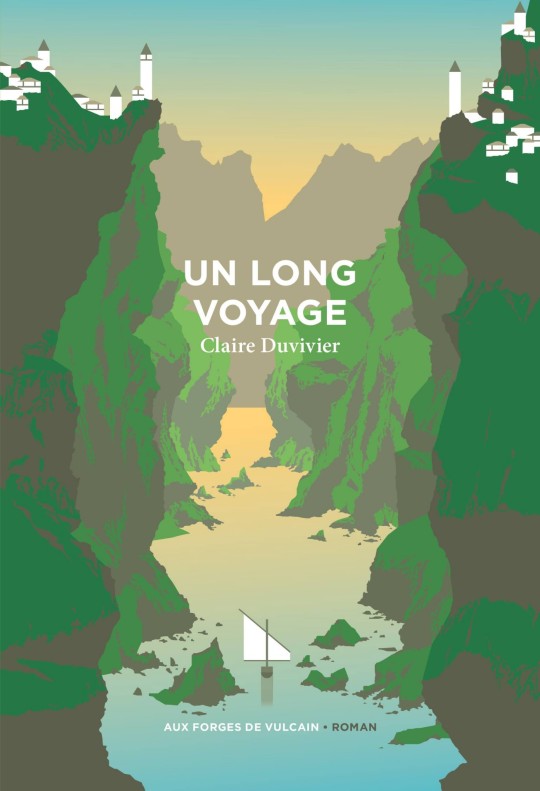
Liesse de Roh-henua raconte sa vie à celle qui, on le devine vite, en partage l'hiver : orphelin de l'Archipel vendu par sa mère comme esclave à l'Empire, éduqué par des clercs bienveillants aux subtilités d'une pesante administration, il devient le secrétaire particulier — puis le bras droit — de la femme qui va bouleverser le cours de son existence : Malvine Zélina de Félarasie, issue d'une haute lignée aristocratique, et dont le nom est entré dans les livres d'histoire alors qu'elle était gouverneur impérial de Solmeri.
D'emblée, le lecteur est immergé dans un monde imaginaire étonnamment réaliste, entre empire byzantin et cités-états grecques, que n'arpente, de prime abord, nulle créature magique, sorcier ou magicien à la longue barbe : la seule incursion dans le genre fantasy — fantastique ? — est unique, mais de taille, et elle aura de lourdes conséquences dans la deuxième partie du roman.
Claire Duvivier, avec un sens du récit qui l'affilie à Robin Hobb, voire à l'Ursula Le Guin de "Terremer" — oui, rien que ça —, ancre les péripéties de son personnage dans un quotidien jamais ennuyeux, en coupant ou en délayant aux moments nécessaires, avec beaucoup de subtilité. On s'attache à Liesse, un personnage complexe et bien dessiné, qui évolue au fil des années, qu'elles soient fastes ou noires, de la candeur de petit provincial mal dégrossi à la sagesse de vieillard lettré et apaisé.
"Un long voyage", de Claire Duvivier, paru aux Editions Aux forges de Vulcain est un livre au rythme faussement alangui, par lequel on est rapidement happé, et qui révèle son lot de surprises et de chausse-trapes : le long voyage n'est pas forcément celui que l'on croit, et son personnage principal n'est pas celui que l'on croit non plus.
Un petite machine d'horlogerie au mouvement impeccable : un roman d'exception calibré à la perfection. Un très grand plaisir de lecture.
Je recommande, évidemment.
0 notes
Text
A PROPOS DE NICE - SOUS LES TOITS DE PARIS - ALLÔ BERLIN, ICI PARIS - PARIS-BÉGUIN
A PROPOS DE NICE – SOUS LES TOITS DE PARIS – ALLÔ BERLIN, ICI PARIS – PARIS-BÉGUIN
Parce que la mémoire collective est vite saturée, elle ne peut retenir, d’une époque ou d’un style, que cinq ou six noms. C’est un phénomène profondément injuste, puisqu’il privilégie les signatures que le souvenir a retenu dans sa passoire, mais il répond à un penchant naturel de l’esprit. Le but de cette série de publications sur les films français des années 1930 est justement de faire échec à…

View On WordPress
1 note
·
View note
Text

El ruso Lev Nikoláievich Tolstói, más conocido como LEÓN TOLSTÓI, es considerado uno de los escritores más importantes de la literatura mundial. Fama que se cimenta en dos obras, “Guerra y Paz” (1867) y “Anna Karenina” (1877), consideradas como la cúspide del realismo.
Y a él le debemos una historia que deviene en el síndrome de ANNA KARENINA, el que sufren los que aman ciegamente sin darse la oportunidad de encontrarse con el otro, los que aman una idea y aman sus propias sensaciones pero no se dan cuenta de a quién tienen delante, porque solo pueden ver su propio reflejo, como Narciso. Embriagados por la euforia confunden el amor a sí mismos con el amar.
A Tolstói le repugnaba el mundo al que pertenecían Anna y Vronski, el amante que la arrastra a la perdición. Ambos se mueven en el ambiente elegante de San Petersburgo, con su doble moral, su frivolidad, su pomposidad funcionaria y su amor por las apariencias. Tolstói prefiere la Moscú más campesina y más rusa antes que la ciudad afrancesada e imperial, pero es en el campo, según él, donde florecen las virtudes humanas. A través de la constante comparación que despierta la historia de Levin y Kitty —la otra pareja protagonista de la doble trama—, sabemos que Tolstói cree que solo en medio de la naturaleza el hombre alcanza la correcta dimensión de su ser, su lugar en el orden de las cosas que van desde los insectos hasta los astros: es ahí donde se fortalece su carácter y se fragua su humildad. Levin es el alter ego de Tolstói, personaje que hacia el final se convierte a una suerte de cristianismo panteísta y que nos adoctrina sobre los caminos de dicha salvación, tal como el autor ruso lo haría con sus discípulos a partir del término de la novela y durante el resto de su vida. De hecho, Tolstói insiste en contrastar las imágenes salvíficas que rodean el amor de Levin y Kitty con las imágenes funestas que envuelven el amor de Anna y Vronski .
Y, aun así, a quien ha salvado Tosltói para la posteridad ha sido a Anna Karenina, dotándola de una integridad moral que la ensalza ante los ojos del lector como una mártir en un mundo y un tiempo injustos, donde los hombres no pagan ninguno de los precios a los que las mujeres sí están obligadas. Anna se lo dice a Vronski una y otra vez: no tienen nada de qué avergonzarse, porque su amor es verdadero y, por lo tanto, legítimo. Para ella, la humillación habría sido permanecer en su matrimonio con Karenin, con el solo fin de conservar las apariencias. Lo que no toleran los censores de la sociedad rusa es el desafío que Anna les plantea con su rechazo a la hipocresía.
Aquí está la mayor reivindicación de Anna Karenina: muere porque no está dispuesta a la falsedad que su medio le exige, porque no está dispuesta a llevar una doble vida como le ofrece su marido, porque defiende que el amor está primero que cualquier convención, porque cree que debería tener las mismas libertades que los hombres. Anna es víctima de esos ojos que la juzgan con una vara distinta a aquella con que juzgan a Vronski, porque siendo mujer, tuvo la pretensión de ser libre de decidir a quién amar.
Porque dos se juntan, pero no se mezclan. Dos se juntan, aunque forman una trinidad: tú, yo, y tú y yo. Dos en amor es para gozar, procurarse felicidad y cuidarse mutuamente. Sin dejar de ser ellos mismos. Es una experiencia única que permite un conocimiento profundo de uno mismo, a la vez que lo extirpa de su tendencia egocéntrica. Justamente lo que le faltó a Karenina, quien solo se escuchó a sí misma y quiso ver en su amado su propia pasión. Y quiso eternizarla, pero no hubo reciprocidad. Y sufrió lo que se ha venido en llamar el síndrome de Anna Karenina.
Muchas son las Anna Karenina que nos ha deparado el séptimo arte, desde la Greta Garbo dirigida por Edmund Goulding (1927) primero, y luego por Clarence Brown (1935), hasta Elizaveta Boyarskaya dirigida por Karen Shakhnazarov (2017). Y en el camino Vivien Leigh dirigida por Julien Duvivier (1948), Claire Bloom dirigida por Rudolph Cartier (1961), Jacqueline Bisset dirigida por Simon Langton (1985), Sophie
Marceau dirigida por Bernard Rose (1997), Keira Knightley dirigida por Joe Wright (2012), entre otras muchas. Sin embargo cabe recordar que las primeras adaptaciones proceden de Rusia (Vldamir Gardin, 1914) y de Hungría (Márton Garas, 1918). Porque Anna Karenina es ya un icono literario y cinematográfico.
7 notes
·
View notes
Text
J'ai commencé Citadins de demain et


1 note
·
View note
Text
« Citadins de demain », de Claire Duvivier
Aujourd'hui sur Blog à part – « Citadins de demain », de Claire Duvivier
Après Le Sang de la Cité, cap au nord: Dehaven, la ville de science, de raison et de commerce qui sert de cadre à Citadins de demain, de Claire Duvivier.
#fantasy #fantastique
Après Le Sang de la Cité, cap au nord: Dehaven, la ville qui sert de cadre à Citadins de demain, de Claire Duvivier. Ville marchande aux mains de guildes puissantes et d’une aristocratie qui se veut gouvernée par la science et la raison, Dehaven prospère, notamment grâce à ses colonies.
Trois jeunes gens, Amalia, Hirion et Yonas, y ont été élevés par des précepteurs dans le but d’en faire des…

View On WordPress
0 notes
Text

#lecture#livre#livres#photographie livres#lectures#litterature#book photography#lecteurs#lectrice#fantasy#Aux forges de Vulcain#SFFF#booklr
3 notes
·
View notes
Text


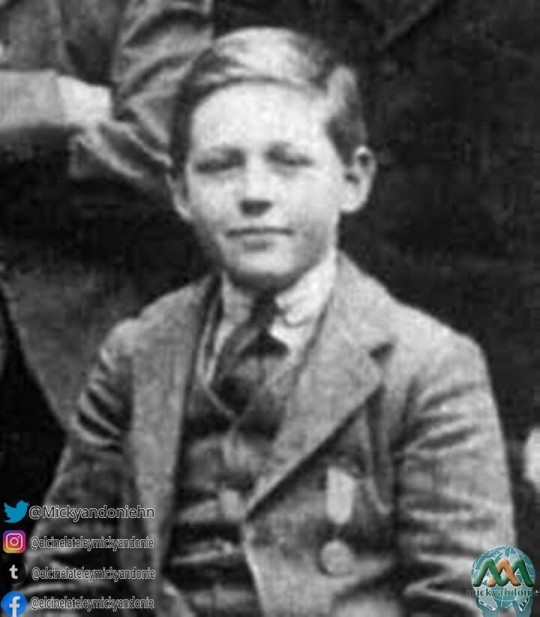

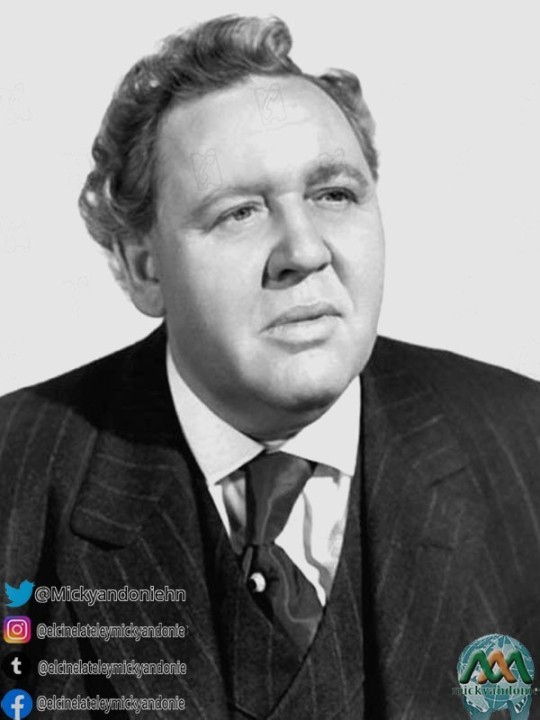
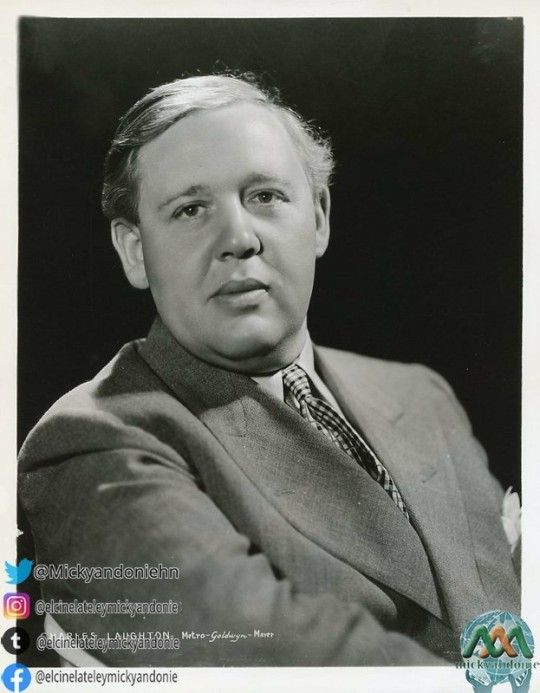

Charles Laughton.
Filmografía
Películas
- Bluebottles, The Tonic, Daydreams (1928) Dir.: Ivor Montagu
- Piccadilly (1929) Dir.: Ewald Andrea Dupont.
- Wolves (1930).
- Down River (1931) Dir. Peter Godfrey
-El caserón de las sombras (The Old Dark - House, 1932) Dir. James Whale
- Entre la espada y la pared (The Devil and the Deep, 1932) Dir. Marion Gering
- Justicia divina/El asesino de Mr. Medland (Payment Deferred, 1932) Dir. Lothar Mendes
- El signo de la cruz (The Sign of the Cross, 1932) Dir. Cecil B. De Mille
- Si yo tuviera un millón (If I Had a Million, 1932) Dirs. Ernst Lubitsch, Norman Taurog, Stephen Roberts, Norman McLeod, James Cruse, William A. - Seiter y H. Bruce Humberstone
- La isla de las almas perdidas (Island of Lost Souls, 1932) Dir. Erle C. Kenton
- La vida privada de Enrique VIII (The Private Life of Henry VIII, 1933) Dir. Alexander Korda
- White Woman (1933) Dir. Stuart Walker
- The Barretts of Wimpole Street (1934) Dir. Sidney Franklin
- Nobleza obliga (Ruggles of Red Gap, 1935) Dir. Leo McCarey
- Los miserables (Les Misérables, 1935) Dir. Richard Boleslawsky
- Rebelión a bordo (Mutiny on the Bounty, 1935) Dir. Frank Lloyd
- Rembrandt (Rembrandt, 1936) Dir. Alexander Korda
- Yo, Claudio (I, Claudius, 1937) Dir. Joseph von Sternberg.
- Bandera amarilla (Vessel of Wrath, 1938) Dir. Eric Pommer (Laughton es actor y coproductor de esta película).
- Las calles de Londres (St. Martin's Lane, 1938) Dir. Tim Whelan (Laughton es actor y coproductor de esta película).
- La posada de Jamaica (Jamaica Inn, 1939) Dir. Alfred Hitchcock (Laughton es actor y coproductor de esta película).
- Esmeralda, la zíngara (The Hunchback of Notre Dame, 1939) Dir. William Dieterle
- Laughton en la película Ellos sabían lo que querían (1940), con Carole Lombard y Frank Fay.
- They Knew What They Wanted (1940) Dir. Garson Kanin
- Casi un ángel (It Started with Eve, 1941) Dir. Henry Koster
- Se acabó la gasolina (The Tuttles of Tahiti, 1942) Dir. Charles Vidor
- Seis destinos (Tales of Manhattan, 1942) Dir. Julien Duvivier
- Stand by for Action (1943) Dir. Robert Z. Leonard
- Forever and a Day (1943) Dirs. René Clair, Edmund Goulding, Cedric Hardwicke, Frank Lloyd, Victor Saville.
-Esta tierra es mía (This Land Is Mine, 1943) Dir. Jean Renoir
- The Man from Down Under (1943) Dir. Robert Z. Leonard
- The Canterville Ghost (1944) Dir. Jules Dassin
- El sospechoso (The Suspect, 1944) Dir. Robert Siodmak
- El capitán Kidd (Captain Kidd, 1945) Dir. Rowland V. Lee
- Su primera noche (Because of Him, 1946) Dir. Richard Wallace
- Arco de triunfo (Arch of Triumph, 1947) Dir. Lewis Milestone
- El reloj asesino (The Big Clock, 1947) Dir. John Farrow
- El proceso Paradine (The Paradine Case, 1948) Dir. Alfred Hitchcock
- On our Merry way/A Miracle can Happen (1948) Dirs. King Vidor, Leslie Fenton, John Huston, George Stevens.
- The Girl from Manhattan (1948) Alfred E. Green
- Soborno (The Bribe, 1949) Dir. Robert Z. Leonard
- El hombre de la torre Eiffel (The Man on the Eiffel Tower, 1949) Dir. Burgess Meredith (codirectores no acreditados: Charles Laughton y Franchot Tone).
- No estoy sola (The Blue Veil, 1951) Dir. Curtis Bernhardt
- The Strange Door (1951) Dir. Joseph Pevney
- Cuatro páginas de la vida (O. Henry's Full House, 1952) Dir. Henry Koster
- Abbott and Costello Meet Captain Kidd (1952) Dir. Charles Lamont
- Salomé (Salome, 1953) Dir. William Dieterle
- La reina virgen (Young Bess, 1953) Dir. George Sidney
- El déspota (Hobson's Choice, 1954) Dir. David Lean
- La noche del cazador (The Night of the Hunter, 1954) Dir. Charles Laughton (no aparece como actor en la película).
T- estigo de cargo (Witness for the Prosecution, 1957) Dir. Billy Wilder
- Bajo diez banderas (Sotto dieci bandiere, 1960) Dir. Diulio Colletti
Espartaco (Spartacus, 1960) Dir, Stanley Kubrick
- Tempestad sobre Washington (Advise and Consent, 1962) Dir. Otto Preminger.
Documentales
- The Epic That Never Was (1965). Dirigido por Bill Duncalf y presentado por Dirk Bogarde. Documental de la BBC sobre el rodaje de I, Claudius con diversas escenas acabadas. (VHS, DVD).
- Callow's Laughton (1987). Documental de la Yorkshire TV-ITV dirigido por Nick Gray y presentado por Simon Callow sobre Charles Laughton.
- Charles Laughton Directs The Night of the Hunter (2002). Documental dirigido por Robert Gitt a partir de tomas descartadas de la Película.
Teatro
Debut teatral (1913). Stonyhurst College, Reino Unido
- The Private Secretary per Charles Hawtrey
Teatro amateur (hasta 1925). Scarborough, Reino Unido
- The Dear Departed por Stanley Houghton
- Trelawney of The Wells por Arthur Wing Pinero
- Hobson's Choice por Harold Brighouse
1926
- The Government Inspector. por Nicolai Gogol. Dir. Theodore Komisarjevsky
- Los puntales de la sociedad por Henrik Ibsen. Dir. Sybil Arundale
- El jardín de los cerezos por Antón Chéjov. Dir. Theodore Komisarjevsky
- Las tres hermanas por Antón Chéjov. Dir. Theodore Komisarjevsky
- Liliom por Ferencz Molnar. Dir. Theodore Komisarjevsky
1927
- The Greater Love por James B. Fagan. Dir. James B. Fagan y Lewis Casson
- Angela por Lady Bell. Dir. Lewis Casson
Vestire gli ignudi por Luigi Pirandello. Dir. Theodore Komisarjevsky
- Medea por Eurípides. Dir. Lewis Casson
- The Happy Husband por Harrison Owen. Dir. Basil Dean
- Paul Y por Dimitri Merejovski. Dir. Theodore Komisarjevsky
- Mr. Prohack por Arnold Bennet y Edward Knoblock. Dir. Theodore Komisarjevsky
1928
- A Man with Red Hair por Benn W. Levy, a partir de la novela de Hugh Walpole. Dir. Theodore Komisarjevsky
- The Making of an Immortal por George Moore. Dir. Robert Atkins
- Riverside Nights por Nigel Playfair y A.P. Herbert. Dir. Nigel Playfair
- Alibi per Michael Morton, a partir de la novela de Agatha Christie. Dir. Gerald duMaurier
- Mr. Pickwick por Cosmo Hamilton y Frank C. Reilly, a partir de la novela de Charles Dickens. Dir. Basil Dean
1929
- Beauty por Jacques Deval (adapt. inglesa: Michael Morton). Dir. Felix Edwardes
- The Silver Tassie por Sean O'Casey. Dir. Raymond Massey
1930
- French Leave por Reginald Berkeley. Dir. Eille Norwood
- On the Spot por Edgar Wallace. Dir. Edgar Wallace
1930
- Payment Deferred por Jeffrey Dell, a partir de la novela de C.S. Forrester. Dir. H.K. Ailiff
1931
-Gira americana (Chicago y Nueva York) de Payment Deferred y Alibi (esta última retítulada The Fatal Alibi y dirigida por Jed Harris).
Old Vic: temporada 1933-34. Londres. Reino Unido. Todas las obras dirigidas por Tyrone Guthrie.
El jardín de los cerezos por Antón Chéjov. Dir. Charles Laughton
1951-52 Estados Unidos y Reino Unido (Gira).
Don Juan in Hell de Man and Superman por George Bernard Shaw. Dir. Charles Laughton.
1953 Estados Unidos (Gira).
John Brown's Body por Stephen Vincent Benet. Dir. y Adaptación: Charles Laughton (no apareció como actor).
1954 Estados Unidos (Gira).
The Caine Mutiny Court Martial por Herman Wouk, a partir de su novela. Dir. Charles Laughton (no apareció como actor).
1956 Nueva York, Estados Unidos.
Major Barbara por George Bernard Shaw. Dir. Charles Laughton
1956 Londres, Reino Unido
The Party por Jane Arden. Dir. Charles Laughton
1959 Stratford-upon-Avon, Reino Unido
El sueño de una noche de verano por William Shakespeare. Dir. Peter Hall
El rey Lear por William Shakespeare. Dir. Glen Byam Shaw.
Créditos: Tomado de Wikipedia
https://es.wikipedia.org/wiki/Charles_Laughton
#HONDURASQUEDATEENCASA
#ELCINELATELEYMICKYANDONIE
3 notes
·
View notes
Text
La Tour de Garde - Capitale du Nord, tome 2 : Mort aux geais !
La Tour de Garde – Capitale du Nord, tome 2 : Mort aux geais !
Titre : Mort aux geais !
Cycle/Série : La Tour de Garde – Capitale du Nord
Auteur : Claire Duvivier
Éditeur : Aux Forges de Vulcain (Fiction) [site officiel]
Date de publication : 21 octobre 2022
Synopsis : Après les terribles meurtres de la maison De Wautier, le monde d’Amalia Van Esqwill s’est écroulé. Considérés comme les principaux suspects, Yonas et elle trouvent refuge dans les tumultueux…
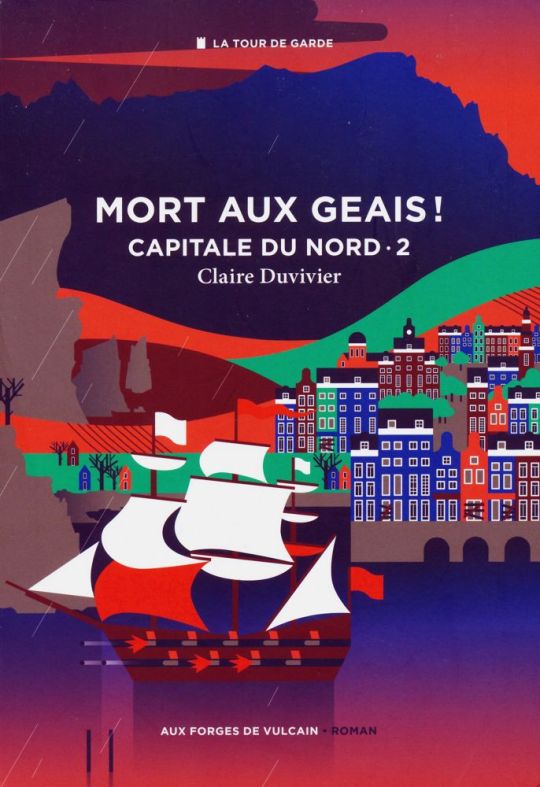
View On WordPress
#amitié#Aux forges de Vulcain#capitale nord 2#colonisation#guerre civile#héroïne#littérature française#petit manuel du parfait réfugié politique
0 notes